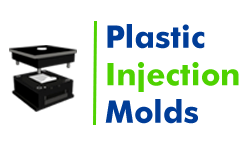- Mould Manufacturer
- Tooling
- Moulding Die
- Plastic Molding
- Plastic Injection Molding
- Injection Molding
- Nylon Injection Molding
- Injection Moulding
- Custom Injection Molding
- Injection Mould
- Injection Mouldings Process Manufacturers
- Medical Injection Molding
- Polycarbonate Injection Moulding
- Rapid Injection Moulding
- Injection Molds
- Injection Molding Cost
- Injection Molding Suppliers
- Injection Moldings
- HDPE Molding
- Metal Injection Molding
- Rubber Injection Molding
- Mold Designing
- Prototyping
- Automotive Injection Molding
- Blow Molding
- 3D Printing
Enhancing the Quality and Nature of Medical Devices with medical injection molding Suppliers
The true essence of medical injection molding lies in manufacturing various medical components and devices by using medical-grade plastic material. These materials are reliable, durable, and meets the FDA regulations. The process is not only cost-effective but also ideal for high-volume production.
Medical injection molding benefits
There is always a high demand for medical plastic injection molding companies when it comes to electronic medical devices and equipment development. There are primarily two reasons for the popularity:
- The increased versatility of the medical-grade plastics
- enhanced attributes of the product on combining with metal
And now, it's time to take a look at the advantages of using these molds for medical devices.
- Notable reduction in weight is a significant impact of applying the injection molding technique to make the devices instead of following the traditional methods of manufacturing.
- Being lightweight, the plastic injection molding medical parts have become just appropriate for developing the implantable components.
- The procedure facilitates the design and arrangement of various products and systems in the workplaces that will fit the orthopedic requirement of the people using the devices.
- The doctors are glad to have the new technique that facilitates the development of the perfect surgical instruments.
Applications of medical injection molding
The rapid growth of many medical molding companies has helped boost production and cater to the needs of the medical industry. For instance, there is a huge improvement in the nature of the drug delivery equipment and the components as well. But that does not imply that the cost of production is going high. Instead, it is just the reverse.
Container manufacturing
The beakers, containers, and test tubes are a vital part of the medical industry. Every day, millions of pathological and biochemical tests are happening at the labs. The industry needs high-quality containers that will aid in the safe transport of the samples to the laboratory and the equally safe handling of the samples while running the tests.
The medical injection moulding process ensures that the containers are of premium quality and the production rate increases without increasing the investment plans. It is only possible through the application of moulding, especially injection moulding.
Universally applicable medical device moulding
One of the chief reasons for using the medical device plastic injection moulding process is the flexibility of its application in nearly all the areas of medical device and equipment requirements. The products are
- Durable
- Sterilization-friendly for reusing or recycling
- Accurate
- High volume production rate
Hence, the medical device molding process is just the beginning of a new era in the medical industry that is now ready to face a surge in demand for tests during emergencies. The pandemic has been the biggest live example.
Choosing Injection Moulding for Your Project
By heating plastic ingredients until they are molten, then injecting them into a mold where they cool and solidify, injection molding is a technique for creating molded items.
The technique plays a significant role in the field of plastic processing and is appropriate for the mass manufacture of goods with complex forms. One of the most popular methods for creating plastic components is injection molding because of its dependable, high-quality performance. To ensure the quality of the finished parts, the injection molding contract manufacturing process must be strictly managed even though it may swiftly manufacture large quantities of plastic components.
Many businesses opt to employ injection-molded components for their products for a variety of reasons, including cost-effectiveness, efficiency, and component quality. Although the injection mould manufacturing process appears straightforward on the surface, several variables must be closely regulated to guarantee the overall quality of the plastic components produced.
Reasons to Consider Using Injection Moulding
The capacity to scale manufacturing in large quantities is injection molding's main benefit. After the initial expenditures are covered, the cost per unit for injection molding contract manufacturing products is quite cheap. As more components are created, the price likewise tends to fall dramatically. Compared to conventional production methods like CNC milling, which remove a sizable portion of the original plastic block or sheet, injection mouldings has low scrap rates.
Although additive manufacturing techniques like 3D printing offer even lower scrap rates, this might be a drawback. Molding by injection is fairly reproducible. In other words, the second component you create will be almost identical to the previous one, etc. When striving to establish brand consistency and part dependability in big volume production, this quality is fantastic.
Repetition and consistency are leveraged by injection molding
Small errors can have big financial and logistical repercussions since injection molding typically involves a large manufacturing scale. Even if there is little room for error, the consequences are significant. When it comes to part design, you should keep injection molding in mind from the very beginning. Early geometric simplification and component reduction will pay off in the long run.Preventing flaws throughout manufacturing is the foremost objective of plastic injection molds while creating the mold tool.
A fantastic technique for completed product manufacture on a large scale is injection molding.Finalized prototypes used for consumer and/or product testing can also benefit from it. Injection Large-scale component production may be accomplished by the injection molding contract manufacturing. In mass manufacturing, where the same component is produced repeatedly hundreds or even millions of times, it is most frequently utilized. A significant upfront expenditure is necessary to get a product ready for injection molding.
FAQ
- Q1. What Are The 3 Main Parts Of The Injection Mold?
An injection mold is like a special cookie cutter for plastic. It has 3 main parts:
- Mold halves: These clamp together, forming the hollow space where the hot, melted plastic is injected.
- Cavities: These are the shaped areas inside the mold that give the plastic its final form.
- Feeding system: This is like a tunnel system that carries the melted plastic from the machine into the cavities.
- Q2. What Is The Tolerance Of Injection Molded Parts?
The tolerance of injection molded parts refers to the acceptable variation in dimensions from the intended design. It ensures parts fit together correctly. Tolerances depend on factors like material and design complexity. Tighter tolerances mean less room for error. Manufacturers aim for precise tolerances to maintain quality and functionality.
- Q3. What Is Part Weight In Injection Molding?
Part weight in injection molding refers to the mass of the final plastic product. It's crucial for quality control and cost management. Manufacturers measure it to ensure consistency and accuracy in production. Accurate part weight helps in maintaining product specifications and meeting customer requirements while controlling material usage and minimizing waste.
- Q4. How To Measure Injection Mold Size?
To measure an injection mold size, use a tape measure or calipers. Measure length, width, and height of the mold's outer dimensions. Ensure accuracy by measuring from the widest points. Record measurements in millimeters or inches. This helps in selecting the right mold for production needs.







.webp)

